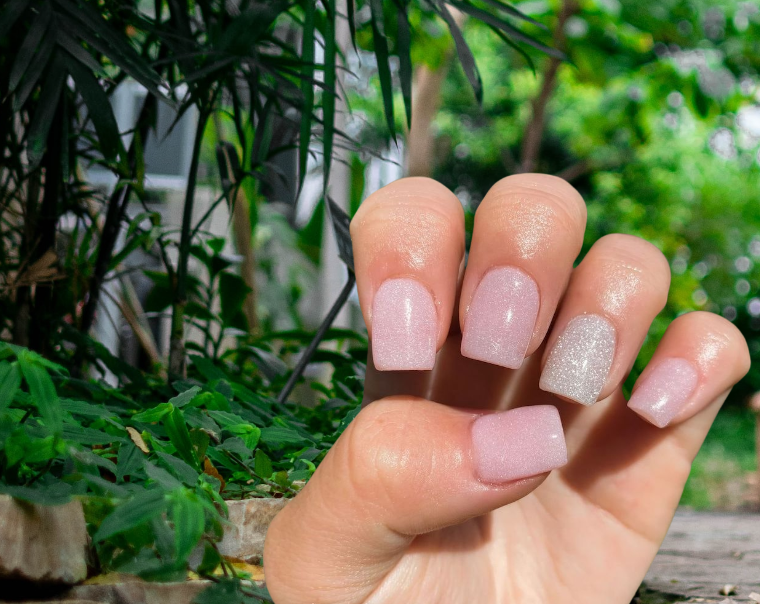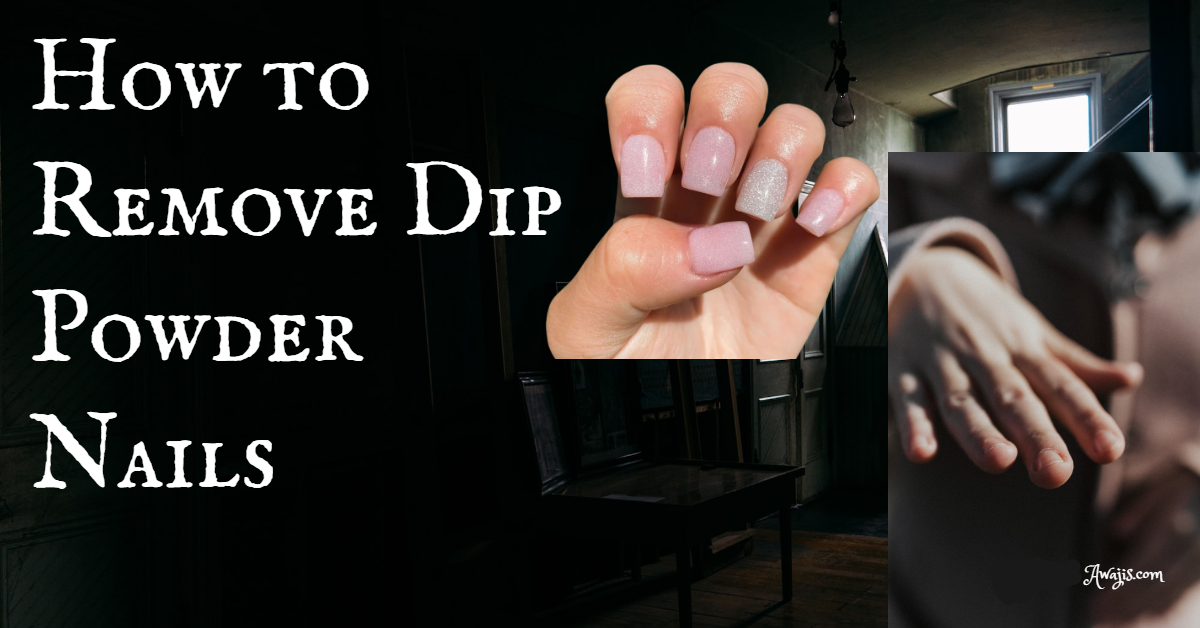How to Remove Dip Powder Nails [Updated Guide]
How to Remove Dip Powder Nails – Dip powder nails are favored by many women since they last longer than a natural manicure or gel polish and don’t chip easily.
Dip powder, or SNS nails (a brand of dip powder developed by CND), blends a special nail glue with colored acrylic powder to create a long-lasting manicure that does not require UV light to cure the polish.
Nevertheless, dip powder nails are thicker than regular manicures since they are done by layering resin and powder, making removal even more challenging than gel nail polish.
Like artificial nails, dip powder nails are best removed by a professional, but with time and caution, the dip powder formula can be removed at home without harming the nails.
Forget about using regular nail paint remover on your dip powder nails; it won’t work. An expert [Joy Terrell, founder of Powder Beauty Co.] claims that only pure acetone can dissolve the layers.
In this piece, you will see two methods recommended by the expert above for removing dip powder nails. Read on.

Supplies Required to Remove Dip Powder Nails
Depending on your removal strategy, your tools requirements may change slightly.
Supplies for Method One [Bowl Soak Method]:
- One full-size paper towel sheet
- One large hand towel
- Coarse grit nail file
- Cotton balls
- Pure acetone
- Small bowl
Supplies for Method Two [Foil Removal]:
- Ten small rectangular foil sheets
- Two plastic bags
- Two small hand towels
- Coarse grit nail file
- Cotton balls
- Pure acetone
How to Remove Dip Powder Nails
When it comes to maintaining healthy nails, most people only focus on the application stage, but removing the polish is just as crucial. How to properly remove dip powder nails is detailed here.
Method One [Bowl Soak Method]
Step One: Trim the extensions and file down the top coat of polish off your nails.
The first step is to dull the dip’s lustrous finish with a file. With this opening, the acetone will be able to work its magic.
Step Two: Apply petroleum jelly to your fingertips and cuticles for extra protection and softness.
To protect your skin from the solvent throughout the removal process, apply petroleum jelly to any regions of the skin that will come into contact with the acetone.
Step Three: Soak each nail with acetone.
To speed up the process, put a folded paper towel at the bottom of the bowl and scuff it with your nails back and forth to generate friction. In this way, your dip will dissolve more rapidly.
Remove the nails from the bowl after 10 to 15 minutes, and wipe the dip powder off with a cotton ball dampened with acetone.
Step Four: Remove any lingering polish with a gentle scrape.
While the acetone will dissolve most of the manicure, some resistant remnants may surface even after 20 minutes.
Using the cuticle stick or something similar, you can carefully scrape away the remaining dip powder and polish off your nails.
Method Two [Foil Removal]
Step One: Trim the extensions and file down the top coat of polish off your nails.
The first step is to dull the dip’s lustrous finish with a file. With this opening, the acetone will be able to work its magic.
Step Two: Apply petroleum jelly to your fingertips and cuticles for extra protection and softness.
To protect your skin from the solvent throughout the removal process, apply petroleum jelly to any regions of the skin that will come into contact with the acetone.
Step Three: Wrap each nail with aluminum foil and Soak each nail with acetone.
Put an acetone-soaked cotton ball on each nail and wrap it in aluminum foil to keep it in place. You can hasten the process by wrapping each hand in a hot towel and a plastic bag.
Step Four: Take off your nail wraps and clean your nails with a damp cloth to remove any excess powder or polish.
Remove the foil wraps from the nails after soaking them for 10 to 15 minutes. The powder should easily brush off. Assuming any residue remains, a cotton ball dipped in acetone should be able to remove it easily.
How About Taking Off Dip Powder Nails without Acetone?
It might simply require a little more work. Using the same procedures, you can remove dip powder nails with ingredients like white vinegar, alcohol, or baking soda mixed with toothpaste.
How to Take Care of Your Nails After Removal of Dip Powder
If you don’t take good care of your nail beds, even the most fantastic long-lasting manicures will eventually damage your nails.
If you want your nails to remain healthy before and after using dip powder, here are a few fast techniques:
- Putting a pause on your manicure is a good idea.
- Apply some nail treatment.
- Apply hand cream and cuticle oil regularly.
Noteworthy Safety Reminders
The removal process for dip powder manicures can damage the nails and skin. Going to a salon is something you should think about doing whenever possible.
In addition to the measures mentioned above, you should also be cautious about your nails. Nail beds can be damaged by excessive filing, so avoid doing so, especially at the nail’s tip.
Even with care, the removal process might damage your natural strands, doing splits and breaks more likely. The resin basis that makes dip powder manicures possible also makes them potentially harmful to the nail.
Definable Dangers
Do a small acetone test on an inconspicuous skin area before attempting to completely remove your dip powder manicure.
Although you may be familiar with using acetone to remove nail paint, removing dip powder nails will expose your fingers to the chemical for far longer than usual.
Remember that acetone is a highly potent chemical. Acetone on a cotton ball is preferable to soaking if your fingers have eczema, psoriasis, or wounds.
If possible, postponing treatment until any injuries have healed would be preferable. To add insult to injury, you shouldn’t get a manicure in the first place if you have nail fungus or any other type of infection.
Salon manicurists often brush on the powder instead of dipping clients’ fingers in it because of the potential for infection with dip powder manicures. Therefore, finding a salon that employs this method will help you avoid getting an infection.
Although you can get rid of a dip powder manicure on your own, the first time is best left to the experts or professionals.
Lastly, manicure removal at home can be done successfully without causing damage to the nails or skin if you take the necessary measures and use the appropriate tools.
We hope you find this information helpful. Please use any of the share buttons below to share this information.
Feel free to drop any questions or contributions regarding this article in the comment section below.
More reads:
9 Easy and Best ways to Remove Security Tags
Why Do Orthopedic Surgeons Hate Podiatrists? (Top 7 Reasons)
